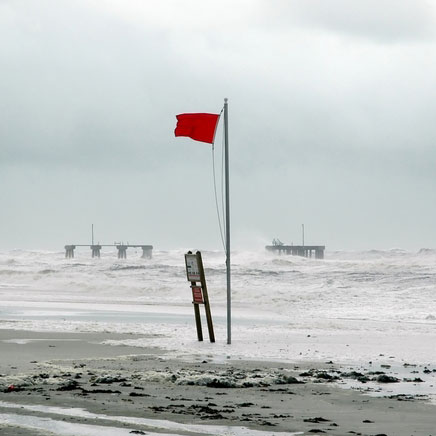A new democratic approach to ecosystem services valuation: An experiment in New Hampshire

A new democratic approach to ecosystem services valuation: An experiment in New Hampshire
Ecosystem service valuation is a method for assigning economic value to an ecosystem. This is not a holistic process. Many environment benefits such as the production food and water and climate stability cannot be measured by economics alone. To include these additional benefits, researchers developed an innovative method that considers environmental aspects through open dialogue and public engagement.
Mavrommati, G., M. Borsuk, and R. B. Howarth. 2016. A novel deliberative multicriteria evaluation approach to ecosystem service valuation. Ecology and Society 22(2):39. https://doi.org/10.5751/ES-09105-220239
In 2015, the Obama Administration issued a memorandum stating that policymakers should incorporate ecosystem services valuation into federal decision-making. Ecosystem services are benefits that ecosystems provide to humans. A few examples of services the environment provides include fresh, clean water from springs and the removal of carbon from the atmosphere by forests.
Ecosystems service valuation (ESV) traditionally entails determining the economic value of an ecosystem service. ESV can help to estimate the cost of damage or destruction to an ecosystem. For instance, ESV helps to answer questions such as: what is the value of the ecosystem services that are lost when a forest is clear-cut? Moreover, ESV helps policymakers with conservation decision-making.
Conducting an ESV conventionally involves using an economic cost-benefit analysis. A critique of this method is that it doesn’t take into account all benefits. This is due to the fact that some benefits cannot be measured in monetary terms alone; for example, the cultural or spiritual value of nature. Moreover, cost-benefit analysis disregards the fact that an ecosystem might never entirely recover from damage or destruction.
To address the shortcomings of ESV, Georgia Mavrommati, Mark Borsuk and Richard Howard developed a novel method to value ecosystems services. This method involves a democratic decision process in which citizens decide how they would use their taxpayer money to protect ecosystems. To do this, the researchers conducted a three-day experiment with community members in the Upper Merrimack River Watershed in New Hampshire. The watershed was chosen for the experiment because it was in a location that was expected to be affected by climate change. In the experiment, the community members evaluated the ecosystem services with a deliberative multicriteria evaluation (DMCE).
Multicriteria evaluation is a process in which various distinct criteria are valuated and weighed. For example, some of the criteria that you might consider when buying a car include price, comfort, safety, color, function and speed. Each of the criteria has a different weight or rank of importance. The weighting of criteria affects the overall decision. In this case, the evaluation occurred by deliberation of the citizen jury acting as stewards for future generations. Thus, it combined deliberative decision-making and multicriteria evaluation, forming a DMCE.
The jury-members comprised 67 locals, reflecting the area’s demographics. During day one of the three-day process, scientists acted as expert witnesses and used both regular slideshow presentations and theater recreations to present two different future possibilities for the area’s development in the year 2100. One future scenario showed rapid suburban development and destruction of the ecosystem; the other showed mixed-use development and conservation of natural areas.
Next, the scientists presented the jury with the DMCE criteria. The criteria were divided into three categories, namely land, climate and water. For the land category, the researchers used the following criteria: the amount of forest coverage, considering the carbon capture provided by plants, which help prevent climate change; agricultural land and maple trees for maple production. For climate, the criteria included the amount of extremely hot days, of snow covered days and of mild days. For water, criteria included the amount of fish habitat loss, coastal harm, water shortage and flooding.
The scientists instructed the jury to conduct the analysis by putting themselves in the place of future generations. By open dialogue, the participants decided on the best and the worst-case situations in each scenario and weighed which criteria they valued most. Lastly, the jury weighed which category they valued highest overall.
In the land category, the jury regarded agriculture more valuable than the other criteria because of food production. In the climate category, citizens valued limiting the number of extremely hot days considerably most. Finally, in the water section, the participants valued diminishing water shortage and coastal harm most. Out of the three segments, water was valued highest in both scenarios; climate and land tied. Citizens argued that, while air conditioner and heat could mitigate the changes to climate, “you can’t live without water”.
After the experiment, most participants said they felt their opinions were heard, the scientists were helpful and that they were considerably satisfied by the outcomes. This demonstrates the importance of a dialectic process. Moreover, the researchers assessed that the participants truly considered the effect the environment had on humans in the valuation and learned more about the watershed in the process. What’s more, the scientists realized that the knowledge-building segment was a two-way street. They discovered new ways to communicate with the public, while gaining knowledge on how they form preferences. However, one challenge related to this method is the time and cost it takes to execute it.
The authors concluded that this model of valuation is positive as it “goes beyond self-interest and promotes common good”. It also provides a solid basis for representing voiceless future generations in the current decision-making. The interactive process was very helpful for scientists, and citizens alike. Therefore, it would be a good alternative for environmental valuation processes.
(For more information on ESV, please consult our previous article.)




